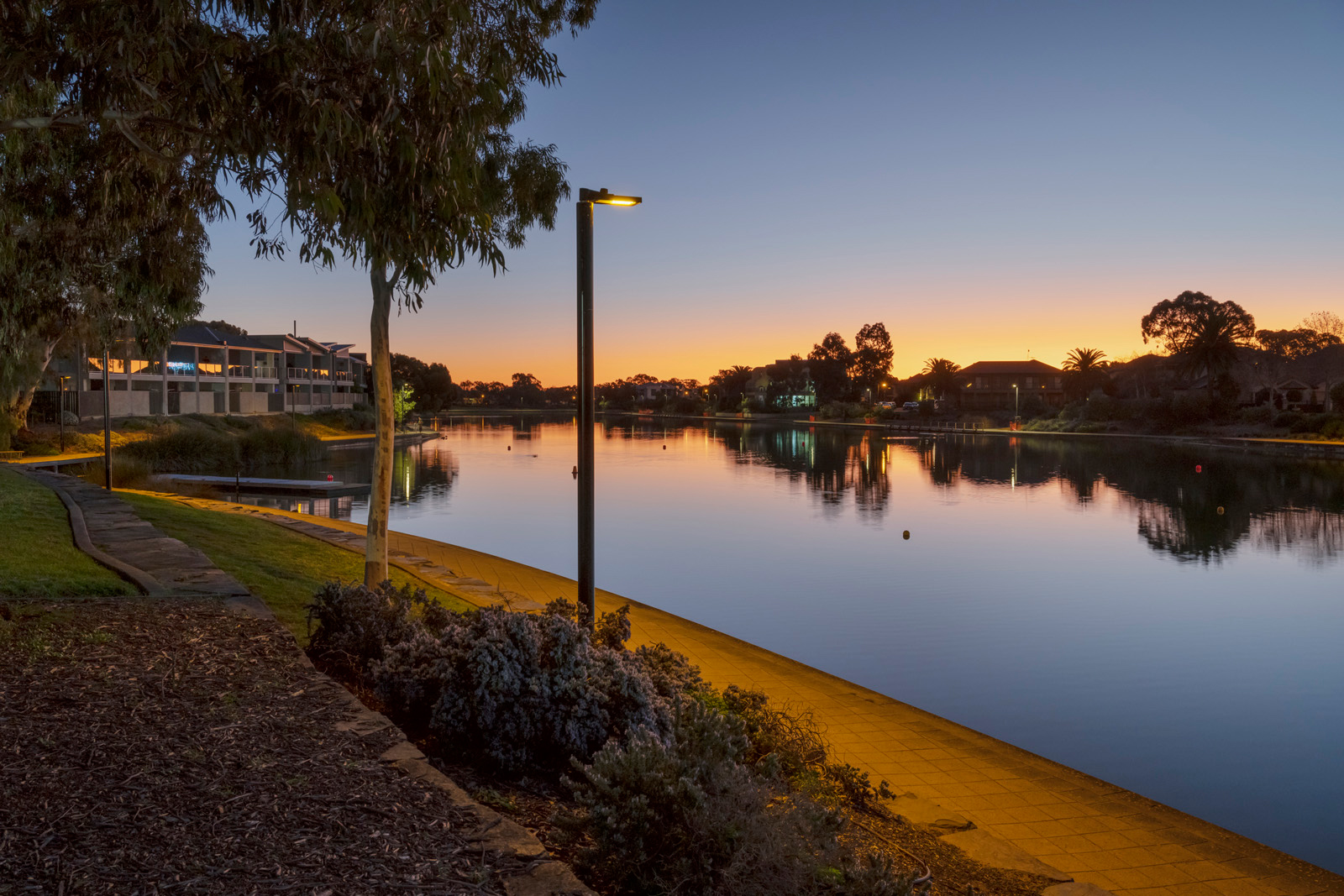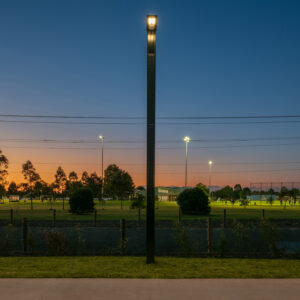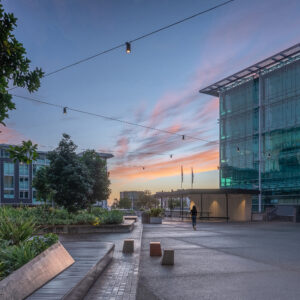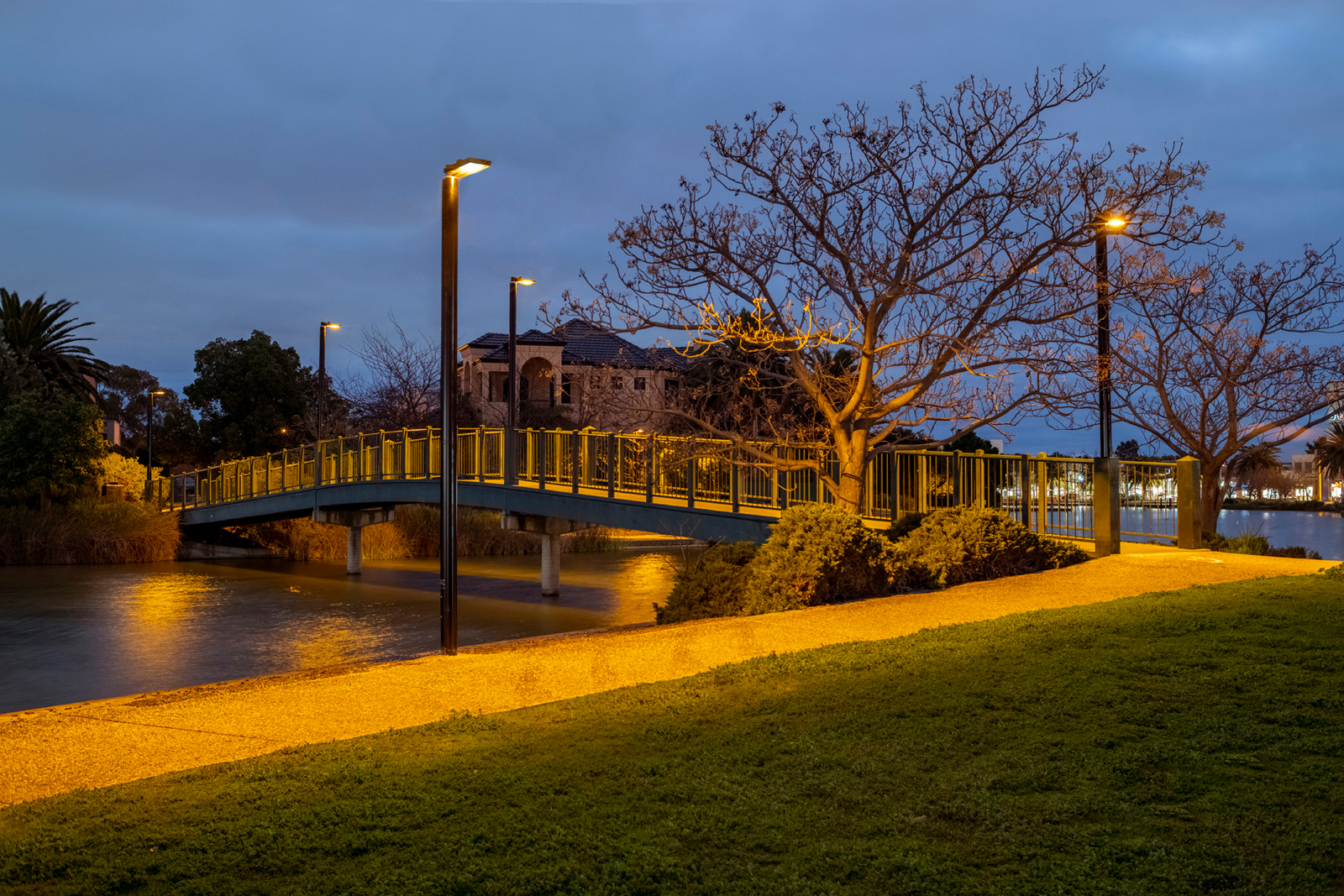
PEDESTRIAN, NIGHT SENSITIVE, STREET & AREA LUMINAIRES
Sir Douglas Mawson Lake’s pathway upgrade
Balancing human and environmental needs
- Completed2022
- ClientCity of Salisbury
- Sales PartnerBuckford Illumination Group (SA)
- PhotographyKaren Waller for WE-EF
The City of Salisbury sought to improve existing lighting around Sir Douglas Mawson Lakes, a residential suburb in the north of Adelaide, Australia. Bordering residential homes and shopping and hospitality areas of the Mawson Lakes Boulevard, the pedestrian, jogging and cycling pathway around the lake was previously lit and part solar controlled using redundant technology that needed to be upgraded.
Energy and Lighting Coordinator, Infrastructure Management, Mr Michael Pavlovich of the City of Salisbury Council wanted to increase the usage of the overall development enhancing the pathways, reserves, picnic and landscaped areas, making them more aesthetically appealing for the community while also taking into strong consideration the environment, seeking to improve conditions for the local fauna, flora and nocturnal ecosystem.
For this project, the City of Salisbury engaged Peter Buckley of Buckford Illumination Group South Australia to deliver a wildlife sensitive lighting solution, using WE-EF LIGHTING, that addressed the key project requirements whilst minimising light pollution and disruption to the environment.
Considerations:
Project considerations included:
• Reliability: superior performance with minimal maintenance and downtime to improve long term cost efficiency and reduce unnecessary outages and labour
• Durability: quality product that is built to last and stand the test of time
• Warranty: Strong service support both on installation and for any post commissioning issues, backed by a comprehensive warranty
• Best practices: Working with a team that can deliver a solution that follows best practice lighting principles
• Existing poles: Working to ensure a new luminaire will deliver an effective solution on existing infrastructure
• Dark Sky Compliant: Selection of a fitting that is ADSA (Australasian Dark Sky Alliance) approved
• Adopting a warm Colour Temperature: PC Amber was identified as the preferred colour temperature, with there being a strong drive to minimise blue light content (that adversely affects biodiversity in the area), but this needed to be carefully considered, being the first installation in South Australia
• Quality Optics: Precisely placing light only where it is needed in a uniform way, without glare and without light spill into areas of rich biodiversity including the lake, thereby ensuring comfortable wayfinding for people while protecting biodiversity
• Energy consumption: Minimising power consumption and maximising energy efficiency
Project Challenges:
Prior to this upgrade, as the before photos depict, the redundant lighting technology used was glary, uneven (big globs of light directly under each luminaire) and poorly controlled in terms of light placement and light spill into surrounding areas.
Part of the pathway includes a bridge that crosses over the bridge. In this area particularly, light spill into the lake was a key concern that needed to be carefully addressed with a new solution.
Michael Pavlovich, Energy & Lighting Coordinator of City of Salisbury is passionate about balancing the needs of both people and biodiversity in lighting applications, “good design should be a balance of needs for all inhabitants of area, not just for human use.”
The brief placed importance on the comfort of the human users of the area including walkers, joggers and cyclists, by providing gentle illumination for wayfinding, safety and security whilst simultaneously making a concerted effort to reduce the impacts on the surrounding biodiversity. In the same environmentally considered vein, the opportunity to minimise power consumption and thus the carbon footprint of the installation was also a priority.
With this environmentally considered approach, the City of Salisbury sought the support of Buckford Illumination Group South Australia to tackle the challenge.
Solution:
Buckford Illumination Group South Australia worked together with WE-EF LIGHTING to deliver a solution comprising 53 x VFL520 post top luminaires for the existing poles along the pathway, with Phosphor-Converted (PC) Amber LED chips and DALI/PE (NEMA) control, to support the council in achieving their objectives in effectively illuminating the pathway while minimising disruption to the biodiversity.
In a first for the region, PC Amber was selected as the colour temperature for this project, for its ability to provide safe wayfinding for people whilst containing <2% blue light content thereby being drastically less disruptive to the surrounding biodiversity than that of cooler colour temperatures. “PC Amber allows the pupils to be dilated allowing you to see more clearly into the darker, unlit areas, and feeling safer, while being wildlife friendly allowing for our nocturnal non-human residents to enjoy the space as nature intended,” explains Mr Michael Pavlovich of the City of Salisbury Council.
With PC Amber LED Chips, the colour temperature equates to approximately 1850 K, similar to a candle flame. While Amber is monochromatic with a peak wavelength of 590 to 595 nm, PC Amber allows far more visible light to get through. Humans as well as most wildlife are sensitive to shorter wavelengths (blue), with it impacting their behaviour, psychology, survivorship and reproductive output.
As an ADSA Approved luminaire (Australasian Dark Sky Alliance), Peter Buckley of Buckford Illumination Group South Australia recommended WE-EF LIGHTING VFL520 with P65 optics (for pathways).
“Good design should be a balance of needs for all inhabitants of area, not just for human use.”
Results:
According to Peter Buckley, the upgraded lighting installation, particularly the PC Amber colour temperature and the aesthetically appealing shape of the VFL520, has been very well received by the local community. The City of Salisbury council and community are very happy with the warm, gentle illumination the PC Amber installation provides, allowing people to move along the pathway with a feeling of comfort and safety.
The 13W PC Amber lighting installation has resulted in an energy efficient and Dark Sky Compliant solution that is encouraging biodiversity to flourish.
As is captured well by the ‘after’ shot of the Sir Douglas Mawson Lakes project, the quality optics of the [P65] beam (pedestrian/bicycle pathway optic) ensures the pathway is uniformly and precisely illuminated, glare is controlled, there is no upward light spill and the surrounding lake and flora and fauna is protected, with the tight optical control directing light to the pathway without unnecessary light spill.
Before
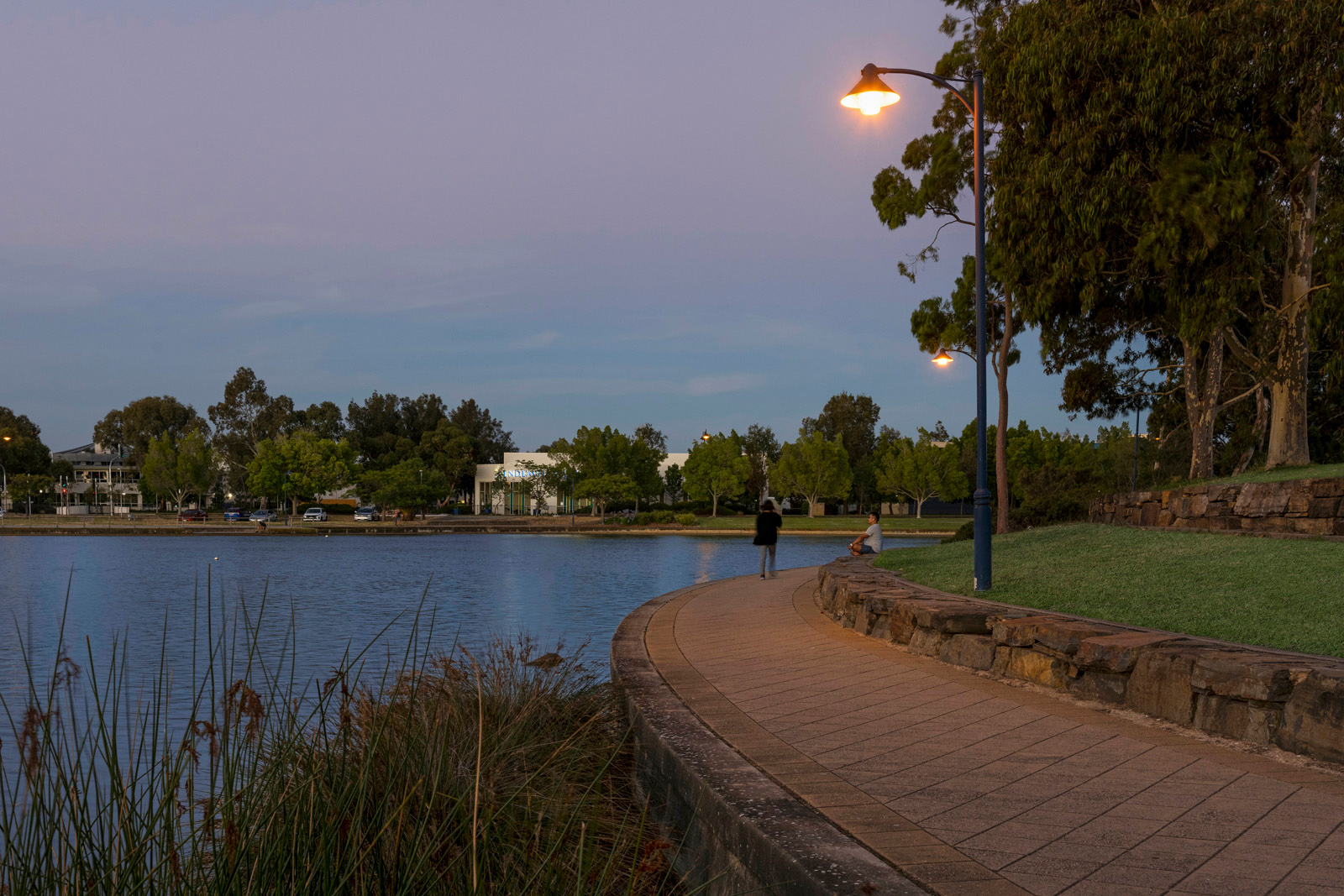
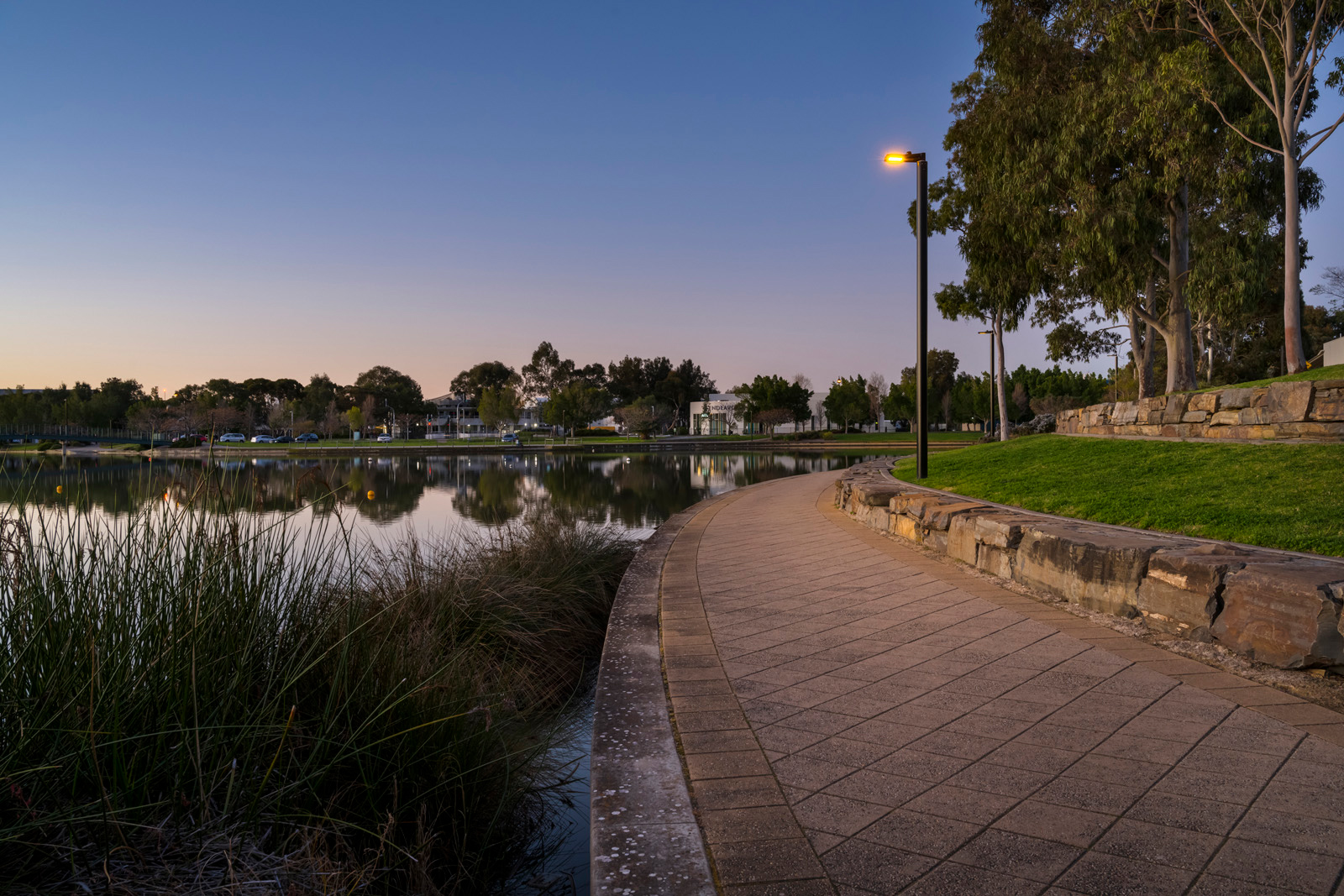
Before
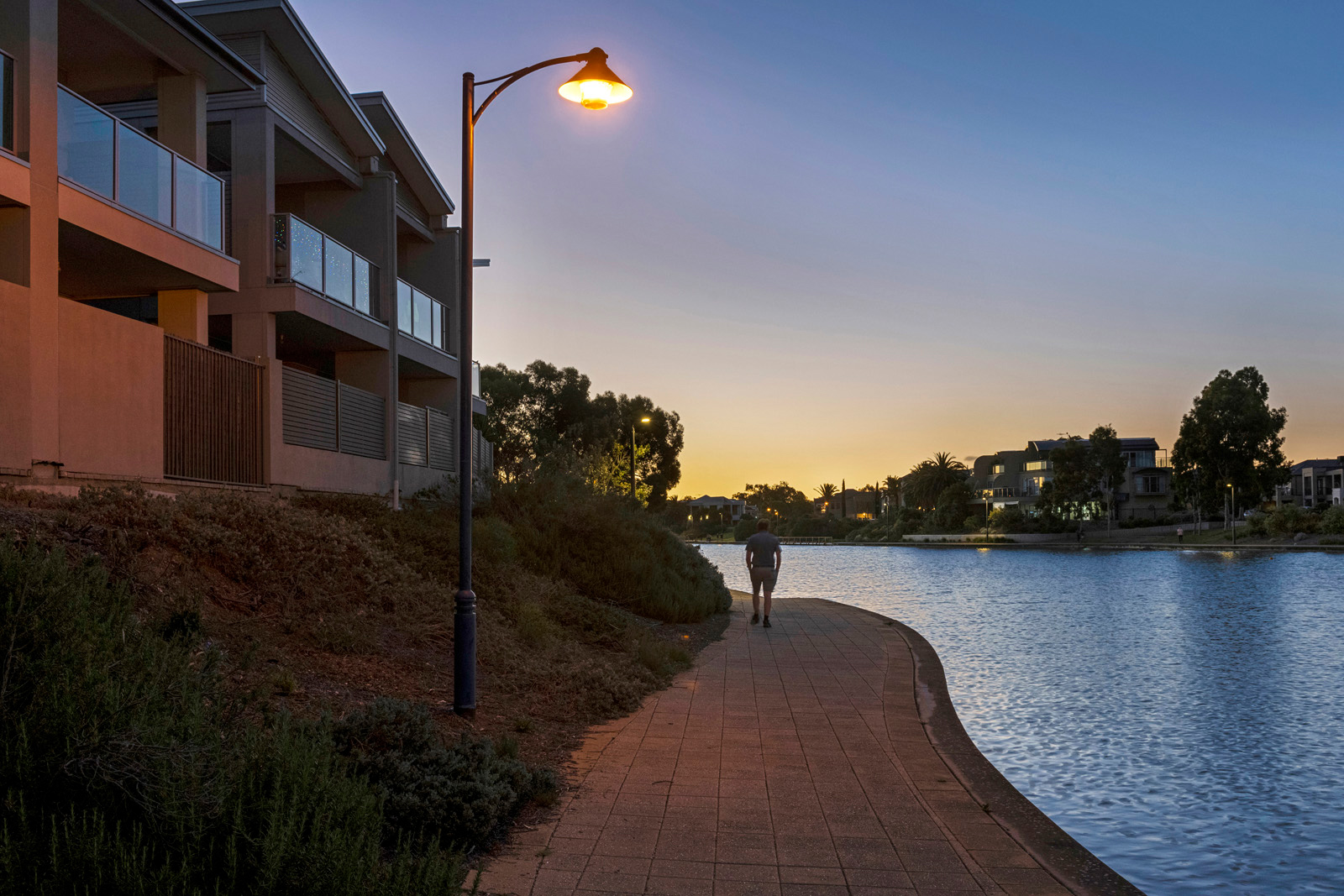
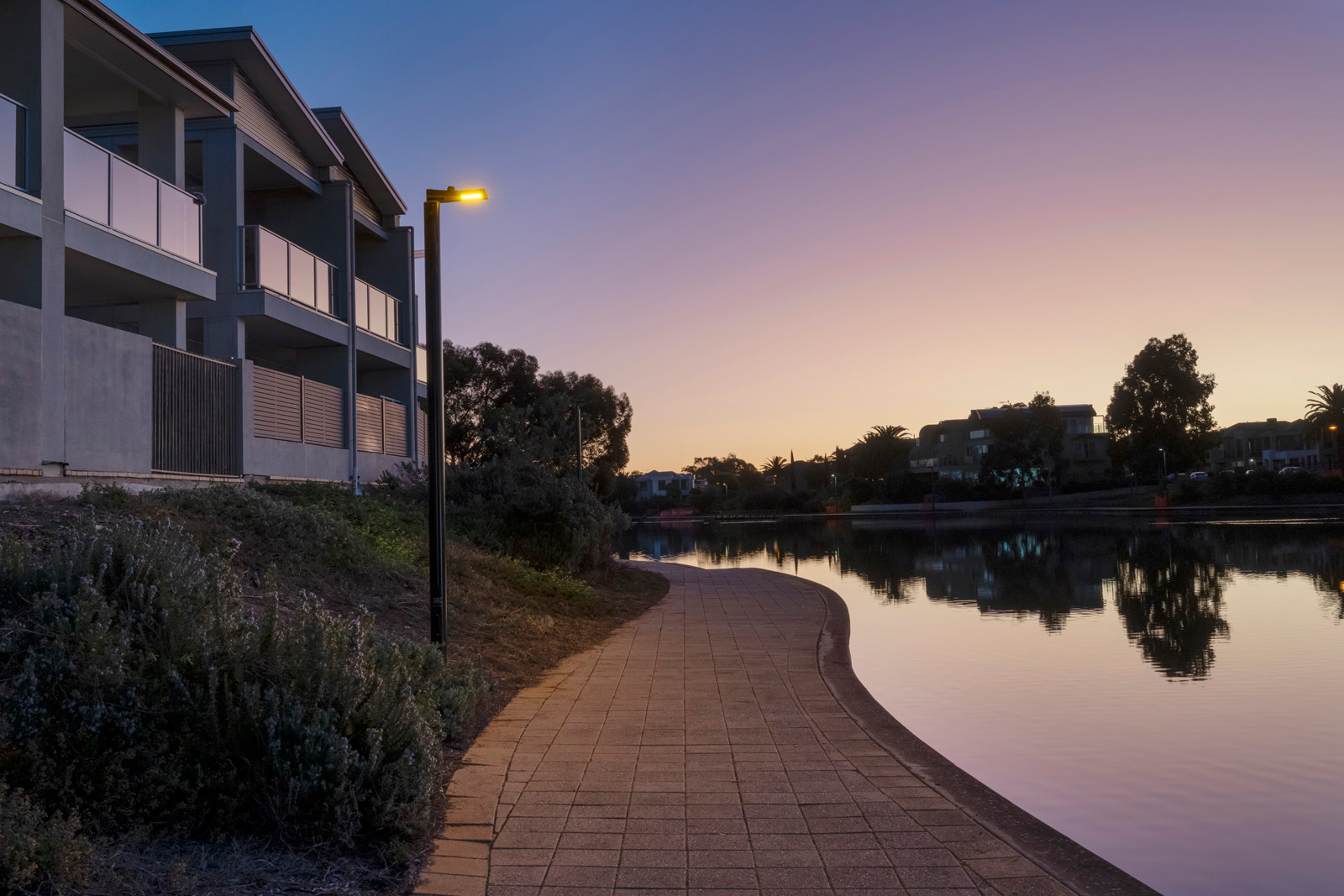
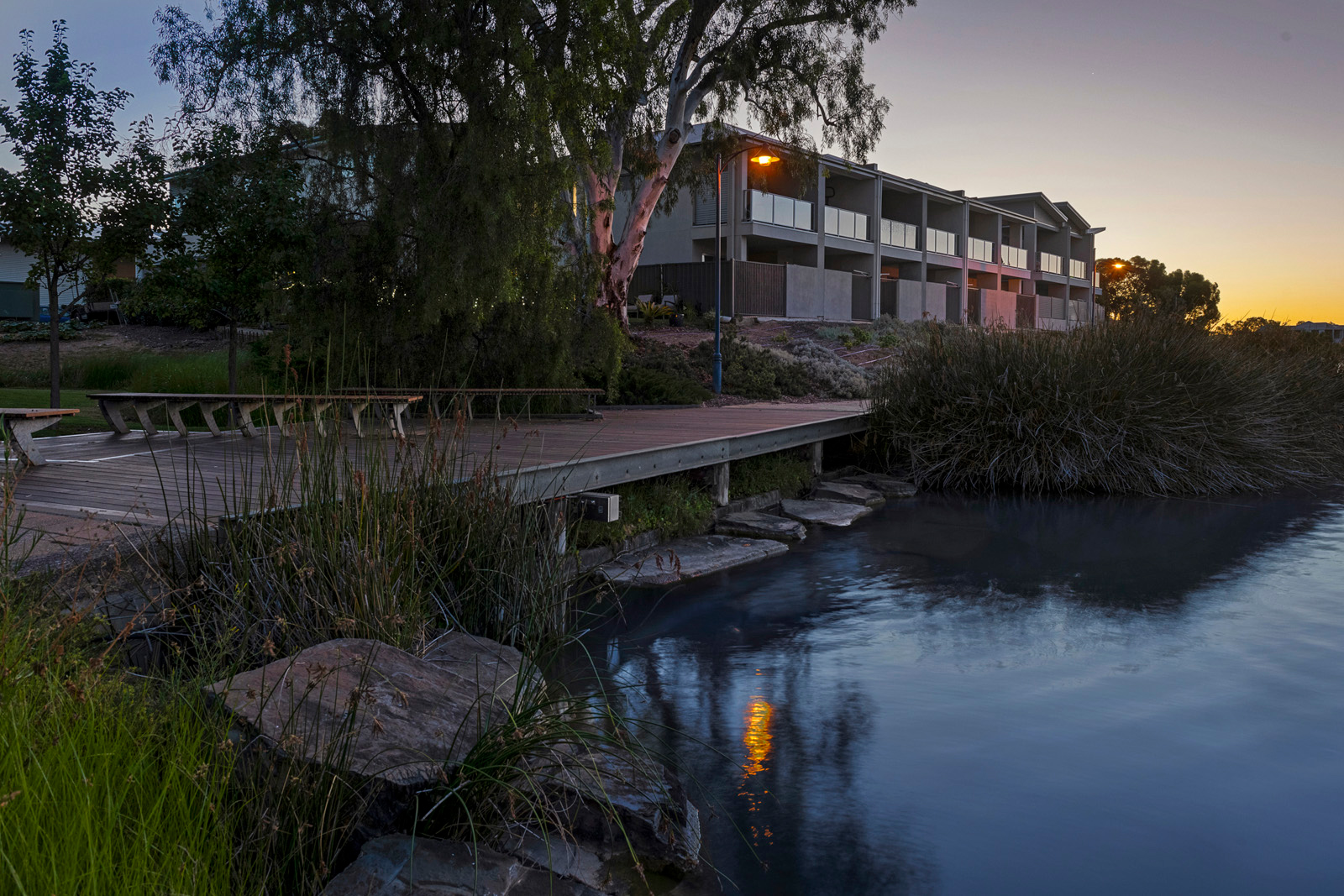
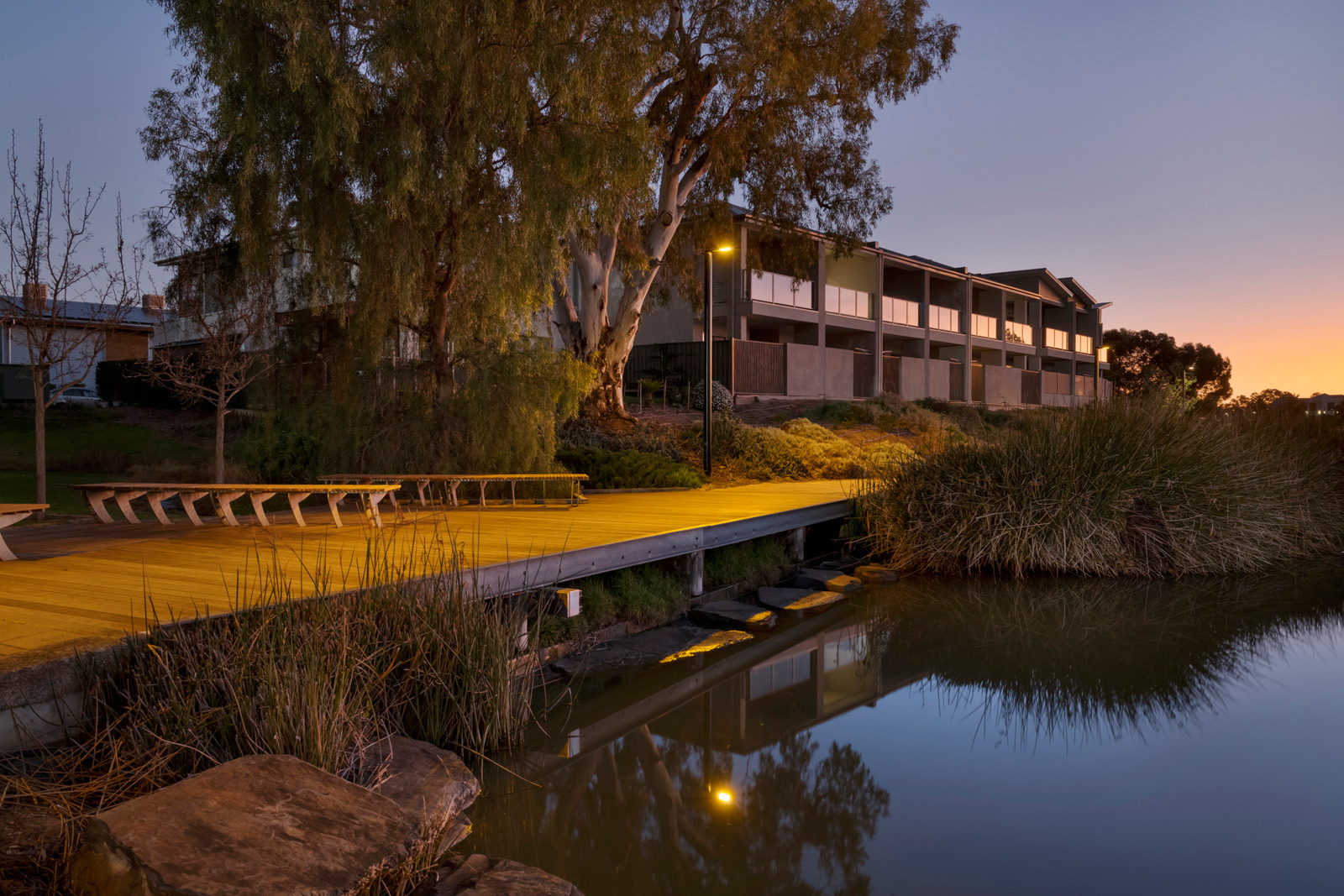
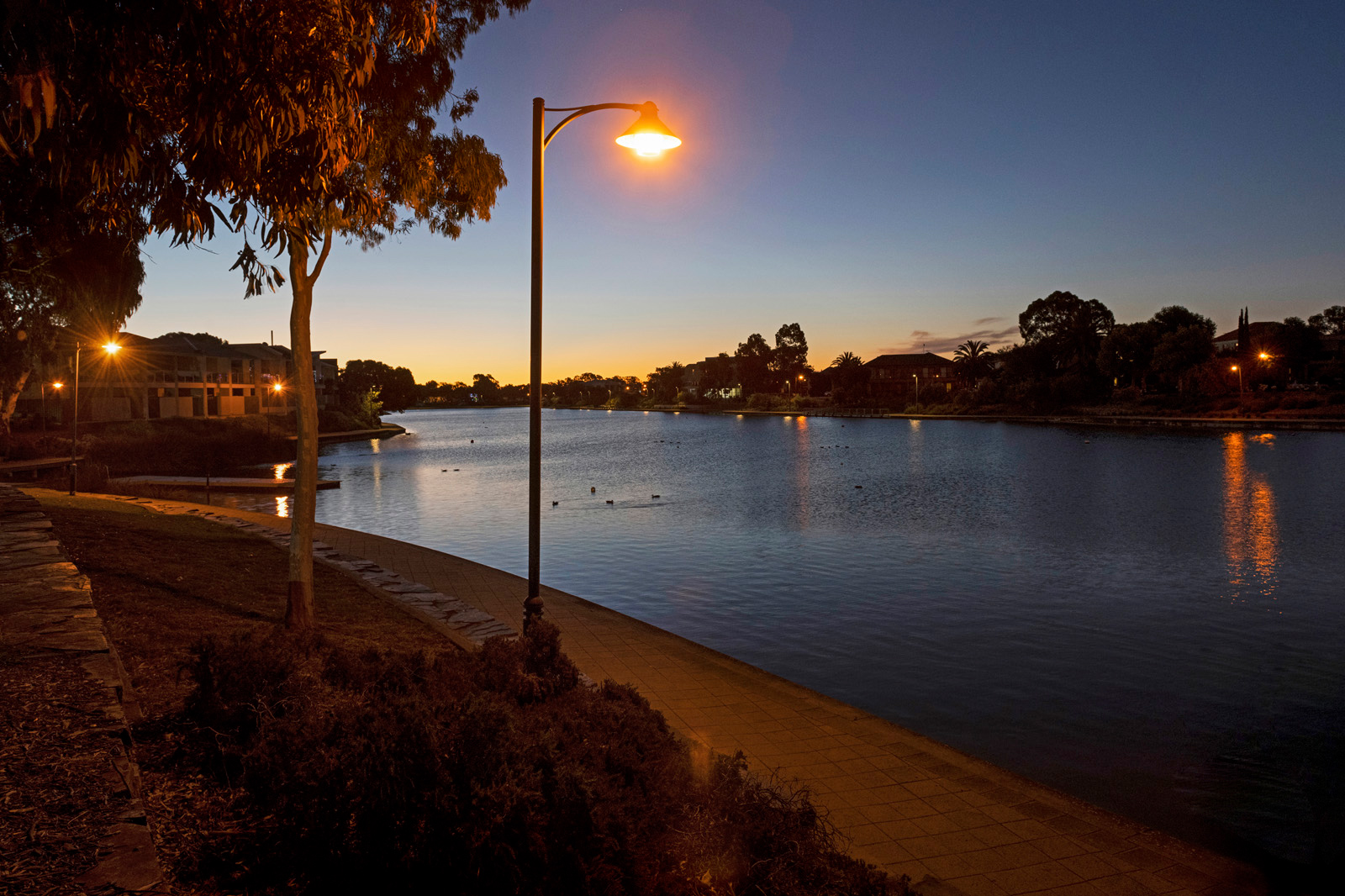
After
